David Collard DPM MHA on Hookworm
Hookworm,
also know in the medical world as Cutaneous Larva Migrans, has recently been in the news. A couple from Canada, Eddie Zytner and Katie Stephens, recently went on a vacation to Punta Cana, Dominican Republic. It was there that they contracted this parasitic worm in their feet and later posted pictures on Facebook, after which several news outlets picked up their story, putting it back into the public eye.
Eddie and Katie initially noted continuous itching and thought they were being bitten by sand fleas, but later, their symptoms worsened and their feet started to swell, change colors and they noticed tracks through their skin.
Why have I never heard of this?!
If you live in North America it’s really not a big deal for most people thanks to the sanitation improvements of the 20th century (It’s all about poop control), although hookworm is actually a worldwide problem according to the CDC. It only lives in very warm, moist environments like the tropics, making it rather common among tourists who visit tropical beaches. But there are specialists who do see cases in the warmer parts of the southeast like Florida. The two most common species of hookworm are Ancylostoma duodenale (typically from dog and cat feces) and Necator americanus.
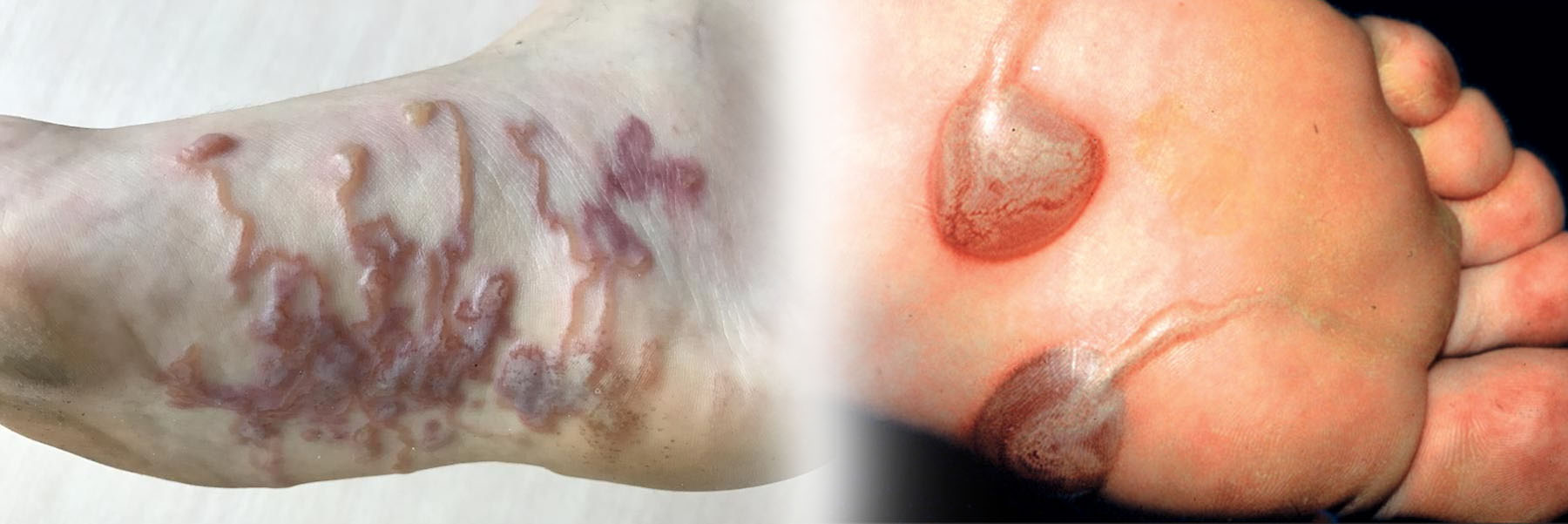
Symptoms include itching, burning, pain, swelling, blisters, and track marks with wiggling worms (cutaneous larva migrans means: larva that move around in your skin). Nightmarish, I know!
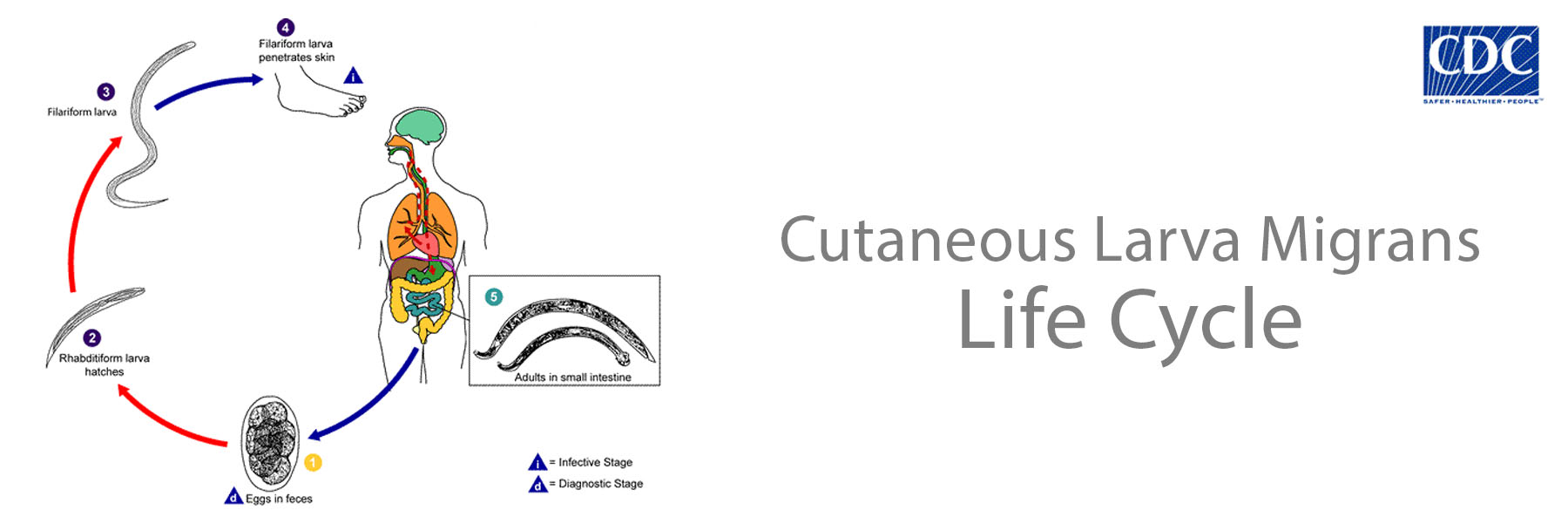
Life Cycle.
(This diagram is for geeks like me) Eggs are passed in the stool and fall into the nice warm sand/soil and hatch in 1 to 2 days. The released larvae grow in the feces/sand/soil, and after a week they become developed enough to get into your skin. The larvae penetrate the skin and can eventually make their way into the bloodstream, into the lungs, and eventually into the small intestines where they can set up shop and send out more eggs, starting the whole beautiful cycle again.
Treatment.
Hookworm can usually quickly be treated with oral medication with few side effects. (Sigh of relief!) Our friends from Canada were eventually able to get the right diagnosis (three docs later) after they returned home and got started on medication. They have been staying off their feet while they recover and their physician monitors their progress.
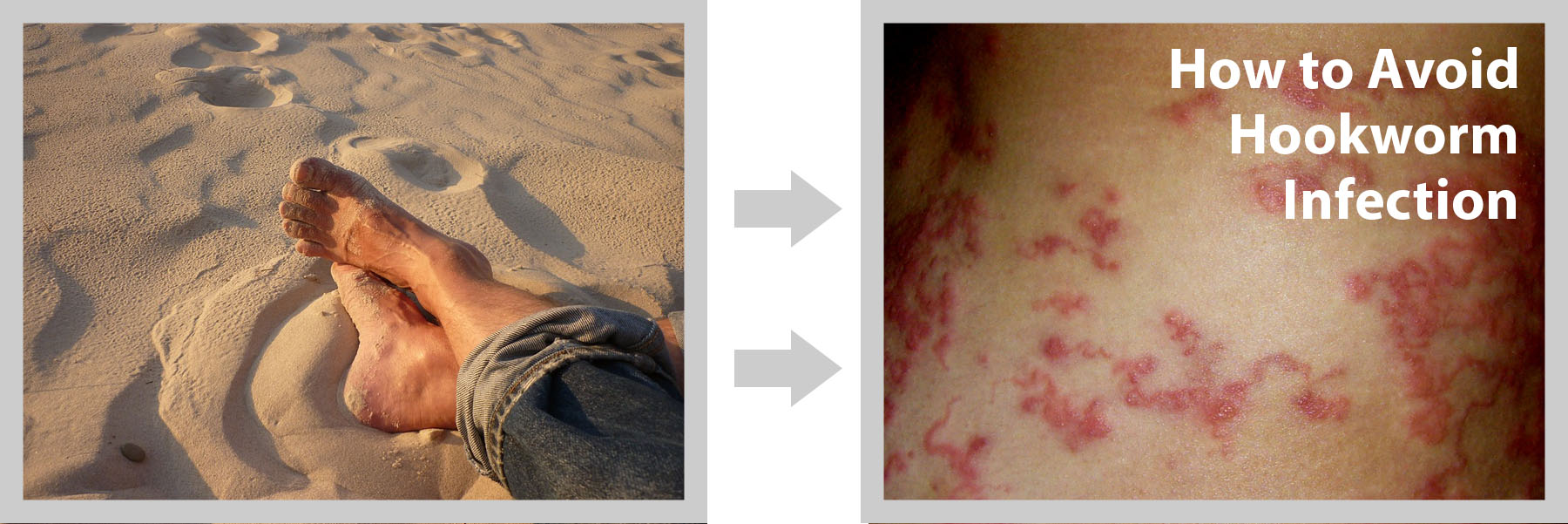
How to Avoid It.
The CDC says the best way to avoid a hookworm infection is not to walk barefoot in areas where hookworm is common and where there may be human and animal fecal contamination of the soil/sand. (Gross.) They also recommend avoiding ingesting soil. (More gross.)
Since we are talking about things that can hurt your feet on the beach, there are also other types of parasites (e.g., strongyloidiasis), or jigger fleas which can burrow into your feet, not to mention all the possible injuries from rocks, metal, glass, and insects. If it is an unfamiliar beach in the tropics, it may be best to protect your feet with water shoes.
If you or someone you know has some strange condition after travel to a tropical area or one of the many injuries which can happen on the beach, we are here to help. Please contact us at one of our locations near you and schedule an appointment.

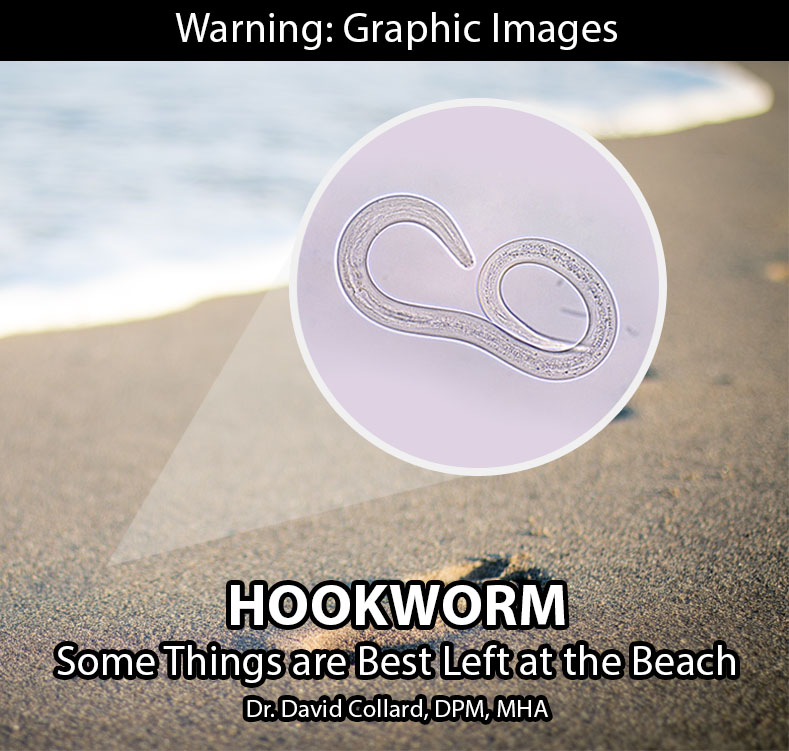
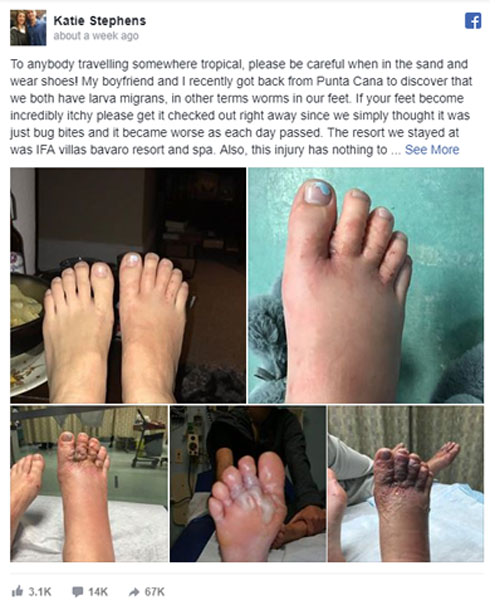
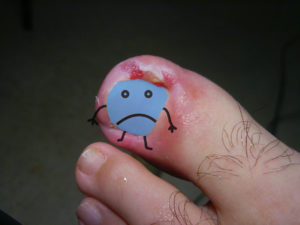
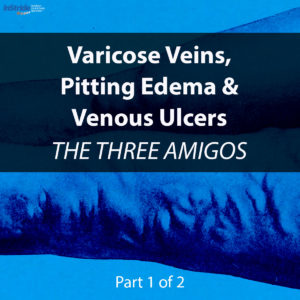
![Read more about the article 8 Home Remedies to GET THE STINK OUT of Your Shoes [Video]](https://www.mtairyfoot.com/wp-content/uploads/2017/11/DrCGTSO-300x300.jpg)